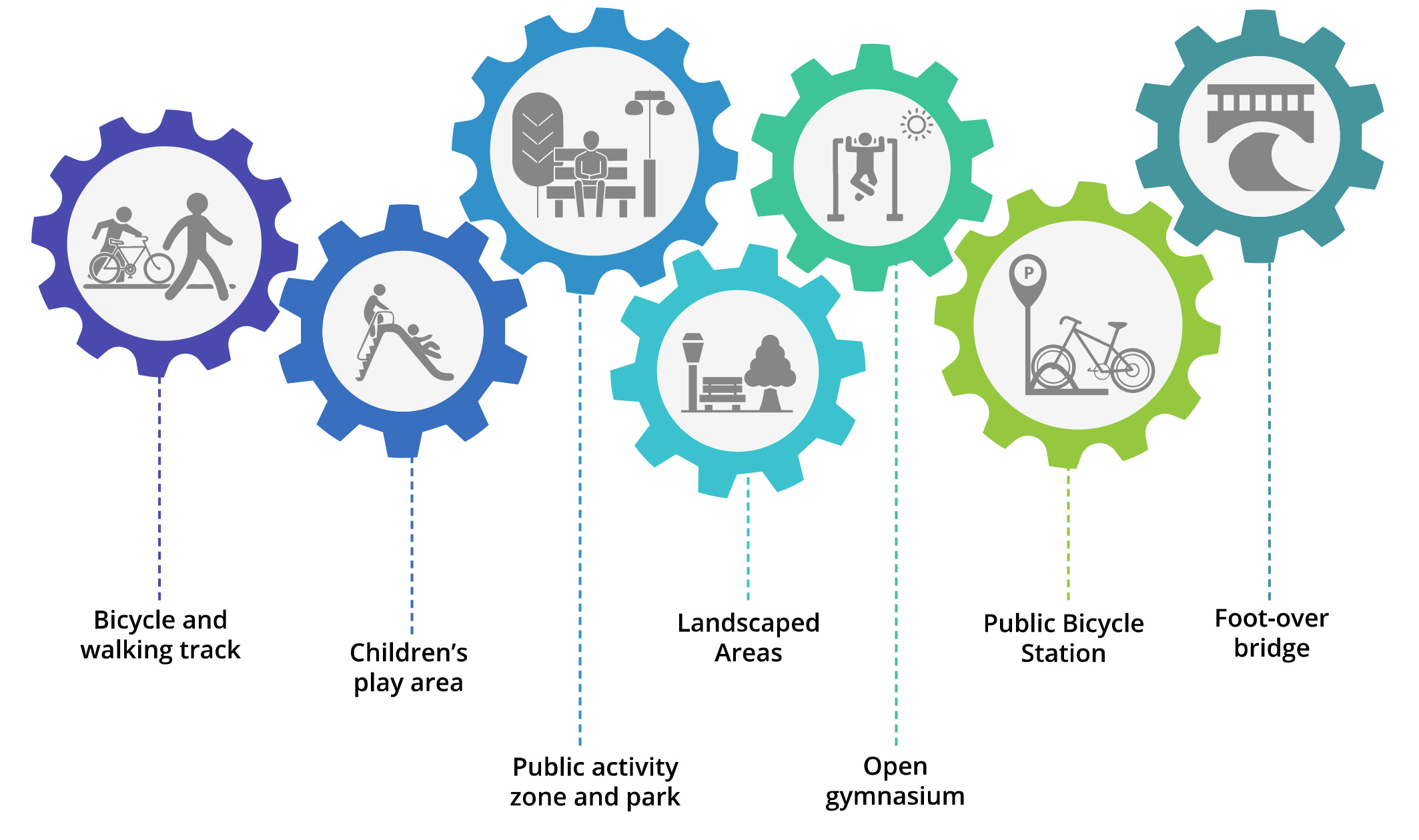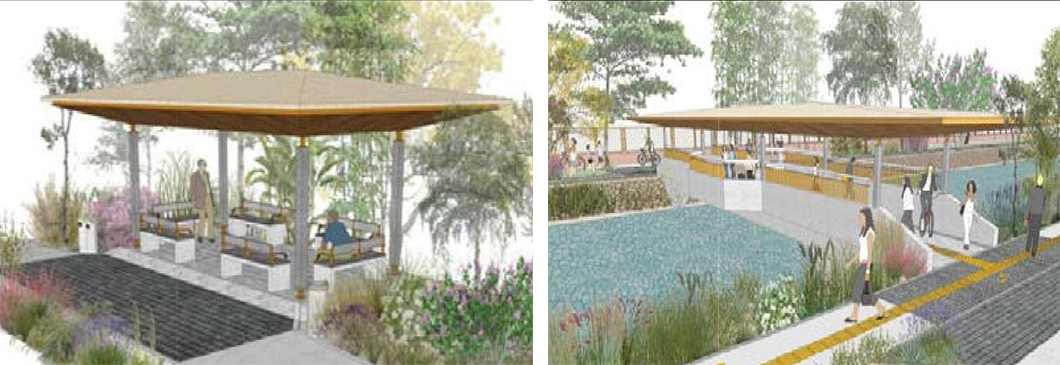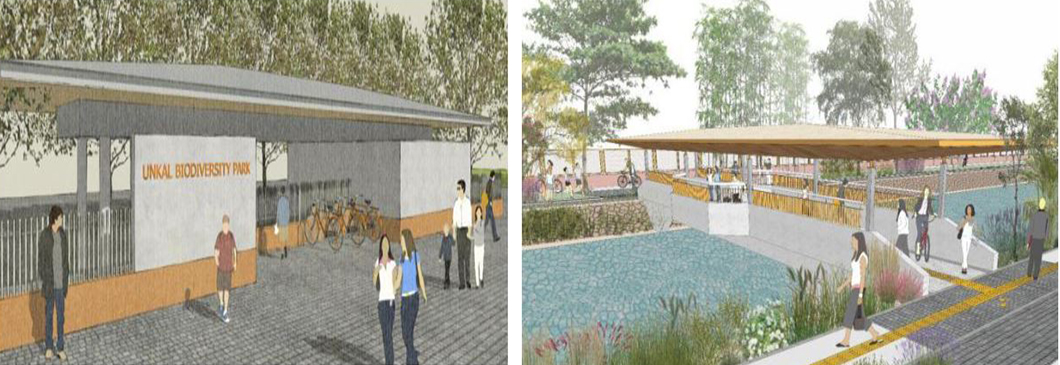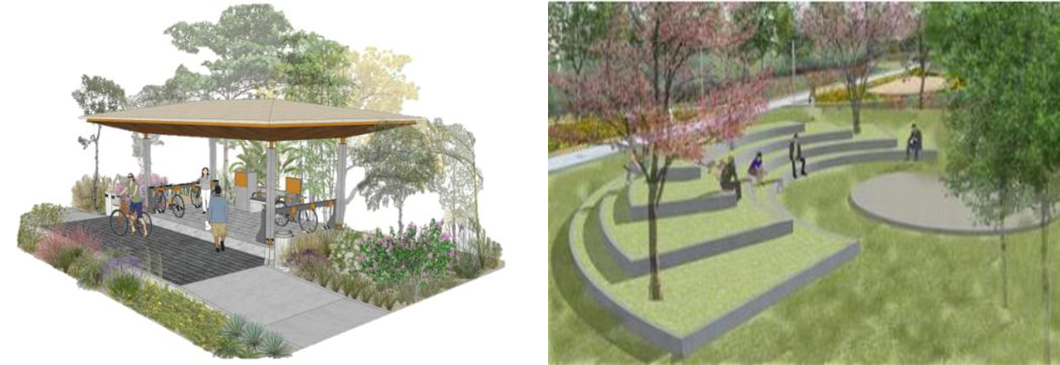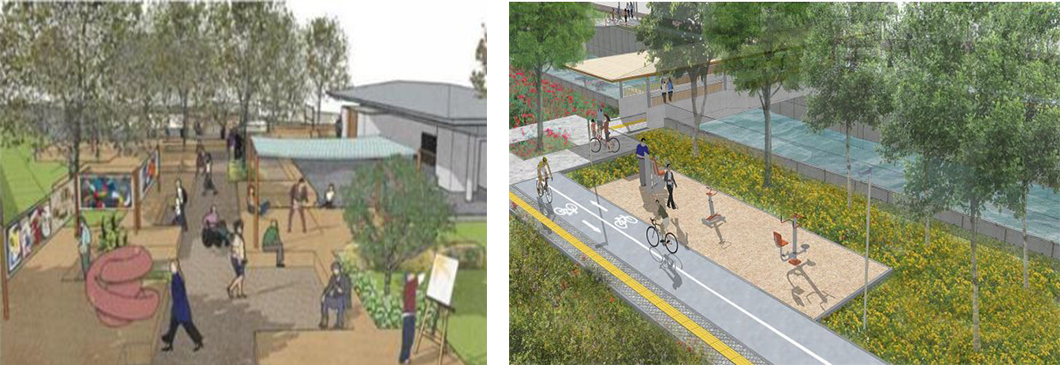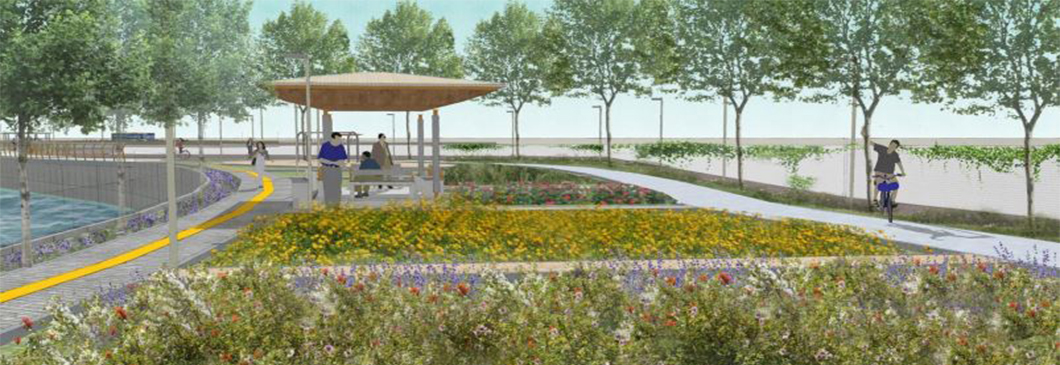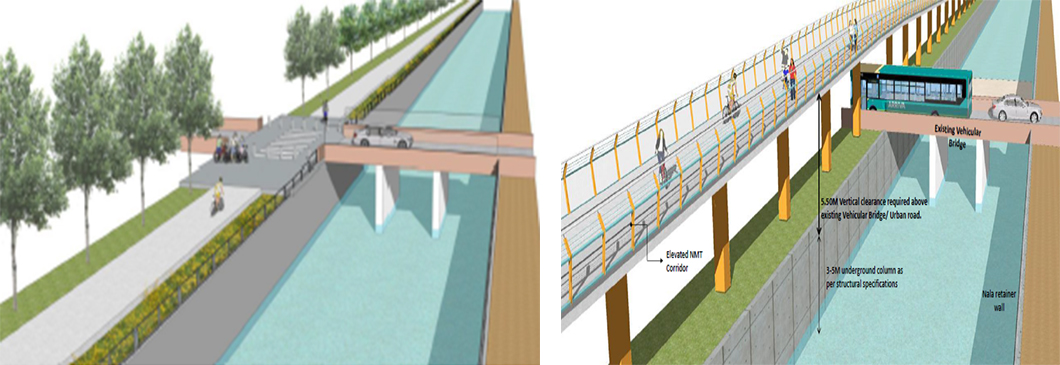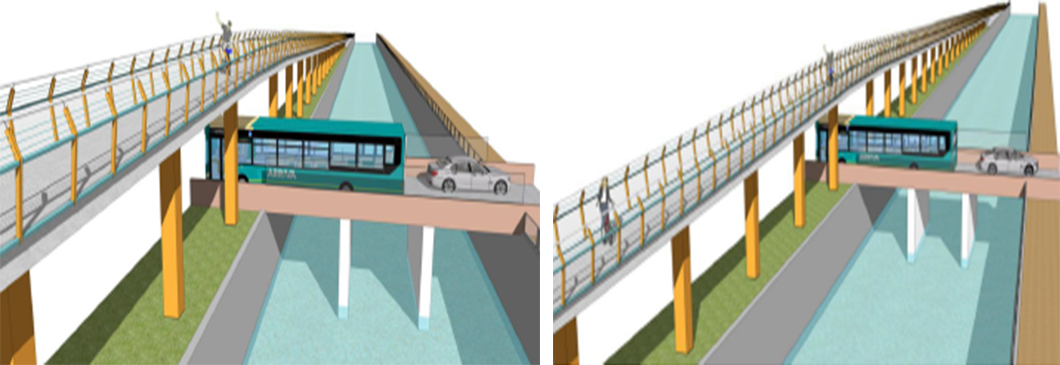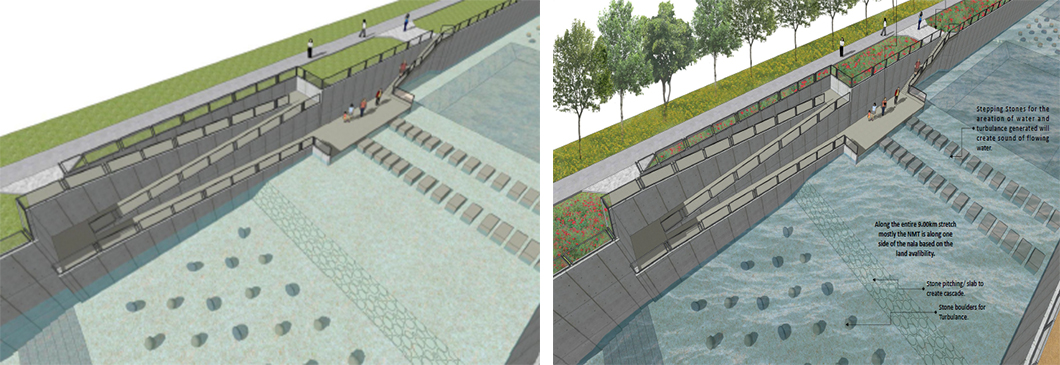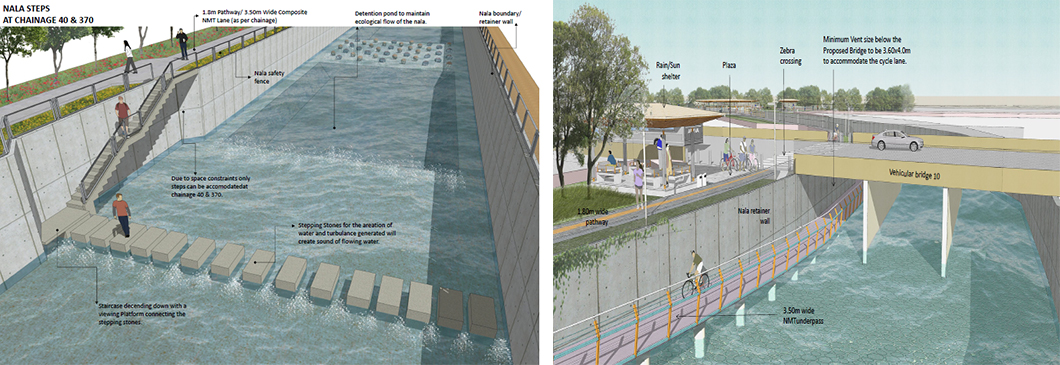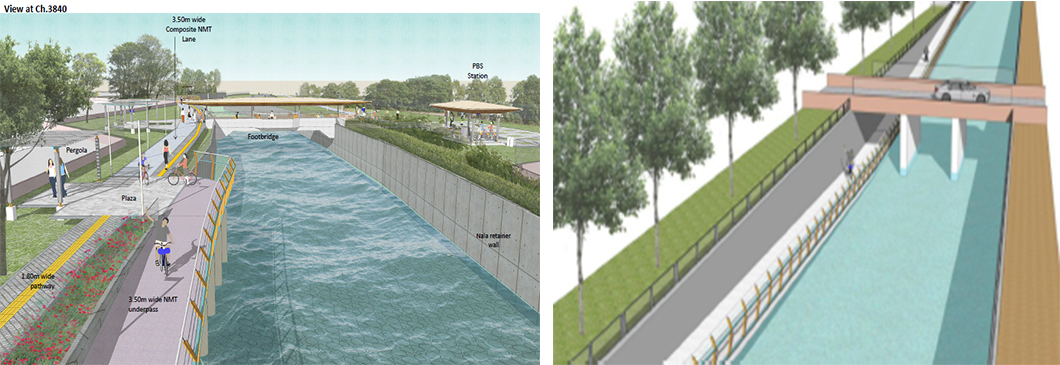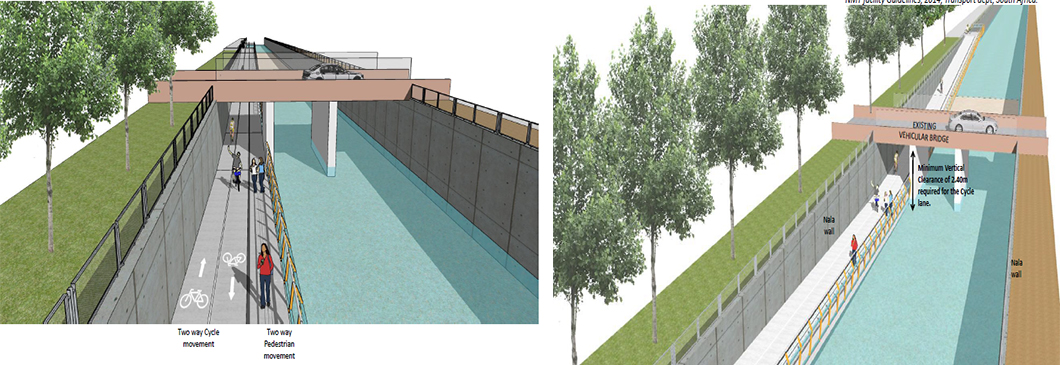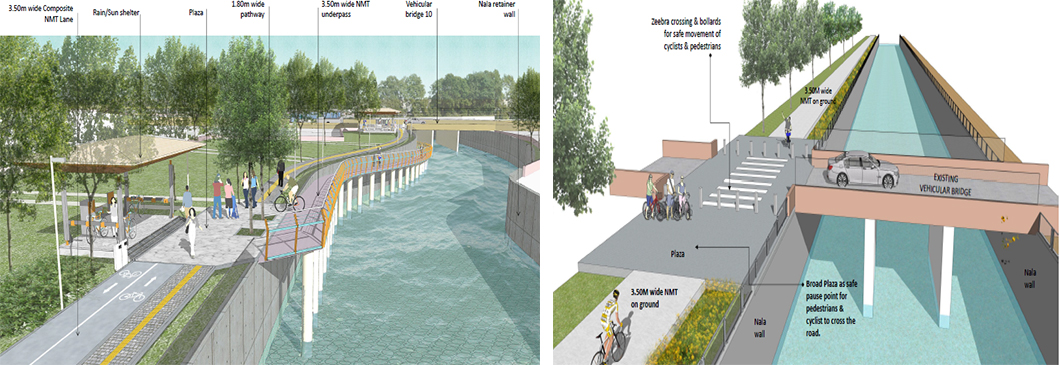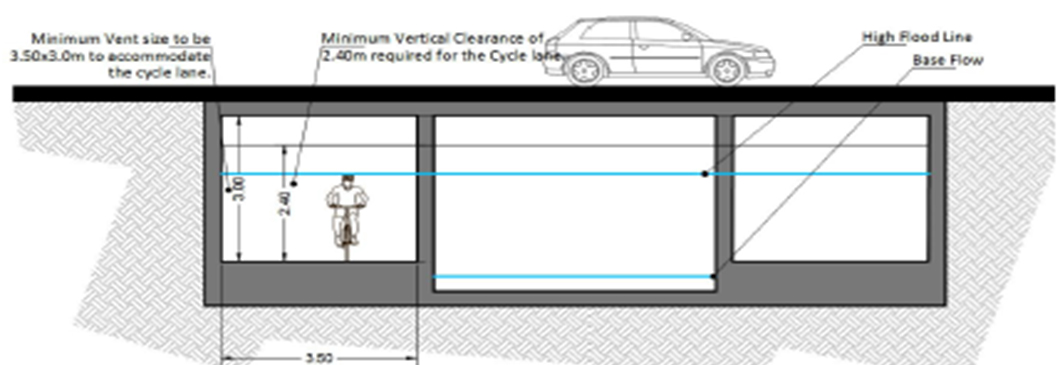GREEN MOBILITY CORRIDOR
About the Project
The Unkal Lake was constructed in 1893 in the northern part of Hubballi town as the main source of drinking water for the town. With an area of 260 acres, It was the main source of drinking water for Hubballi till other augmentation schemes were taken up to meet the needs of the burgeoning population of the twin cities of Hubballi-Dharwad.The Unkal Nala is one of the main storm water drains passing through Hubballi city. It carries the runoff from Dharwad area, which ultimately leads to Unkal Lake.The overflow weir of the Unkal Lake is the starting point of this nala. From the overflow weir, this nala traverses a length of 7.5 km before falling into Bidnal nala. Hence, Unkal lake, its catchment, the overflow arrangement would entail critical design considerations for the proposed project.
With an aim to improve the quality of life for citizens in Hubballi by encouraging cycling and walkability, HDSCL aims to develop a nine kilometer long Non-motorized corridor along the Unkal Nala (storm water drain). In addition to this, the SPV has proposed the improvement of edge conditions of the drainage channel for better flow management. The lack of centralised recreational facilities and the absence of dedicated cycling infrastructure led to the conceptualisation of the project, with the following overarching objectives.:
- To develop a non-motorized corridor along existing drainage channel;
- To Develop the storm water drainage channel to its optimum capacity for better flow management; and
- To capture popular imagination by means of converting the existing unclean, inaccessible Nala into a vibrant public utility and recreation space.
Vision
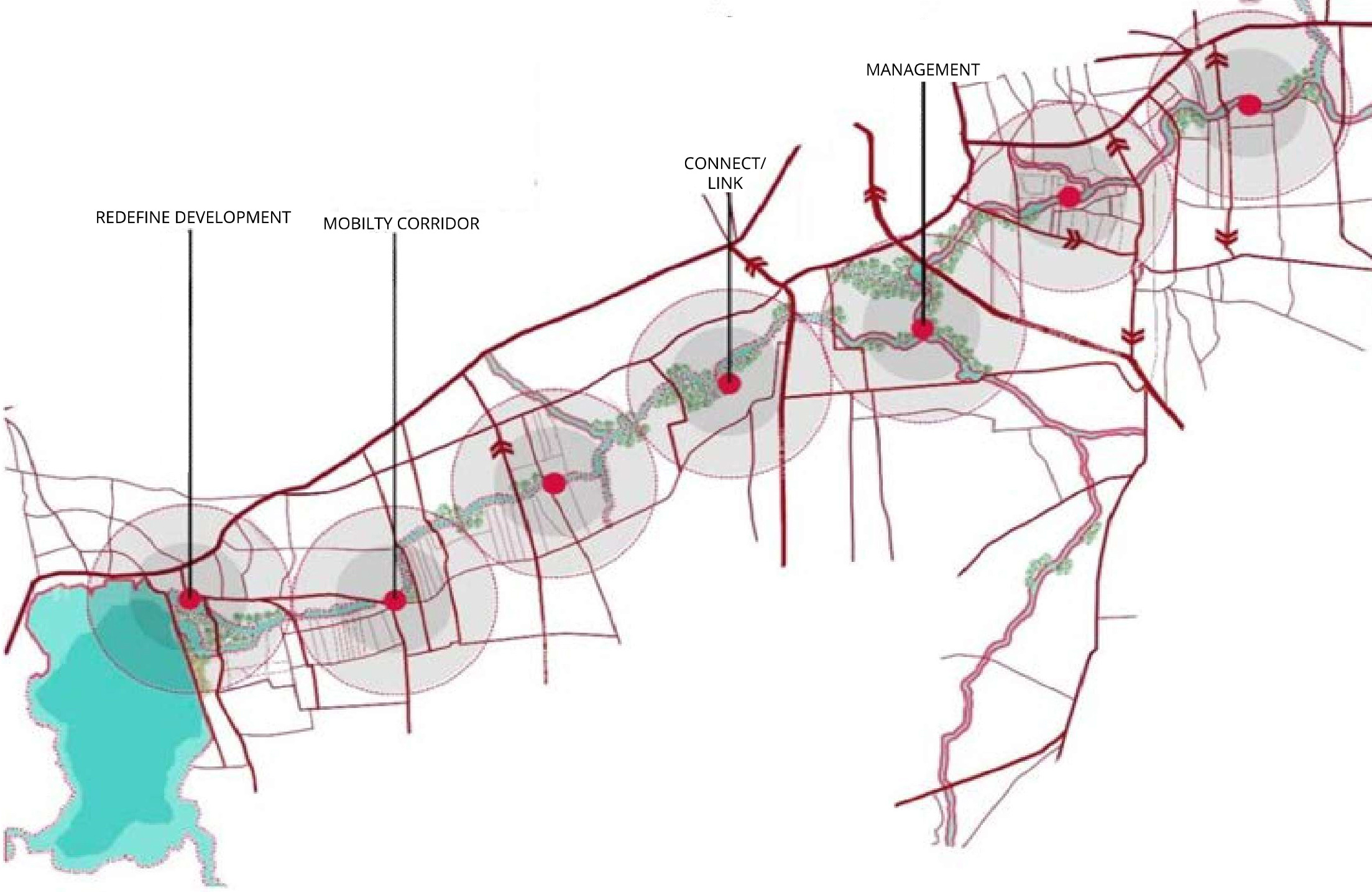
The Vision is to promote Non-Motorised transportation system in the city by creating “Green corridors and by linking the city across transit nodes”. Extending mass transit urban transport systems connecting all modes of transport across the city's growth corridor; allowing seamless integration of NMT with the public transport system.
The Master Plan broadly looks at improving the infrastructure, socio-cultural services, economic and biodiversity value of the city. For which it has to address key issues of Flood risk, unchecked pollution of air and water, lack of public mobility, Safety, sewage mismanagement, poor biodiversity and degrading ecological nutrient flows. Apart from these more tangible issues, the project also aims to add value to the social life in the city by providing an accessible public space for all, reconnecting them to the city’s natural resources and building a sense of ownership and belonging. The design components, elements and details capture both the cultural and ecological essence of the city to make the project specific to Hubballi.
Objectives
- Create Non-motorised transport corridor with barrier free access to public to address the growing urban traffic issues.
- Restore and enhance the performance of the natural systems that makes the nala a resilient system.
- Develop the drainage channel to its optimum capacity for better flow management and avoid flooding to a large extent.
- Identify and utilise potential areas around the nala to provide ecosystem services to the city.
- Create a decentralized system for stormwater management.
- Providing holistic & people centric design for utilitarian uses of the public spaces.
- Last mile connectivity offers integrated route planning for better urban liveability.
- Mitigate urban air quality, flood risk, groundwater depletion and heat risks in vulnerable areas.
- Capture popular imagination in terms of showcasing the Mission Transformation and Swachhata drives by means of converting the existing unclean, inaccessible Nala into a vibrant public utility and recreation space.
Project components
